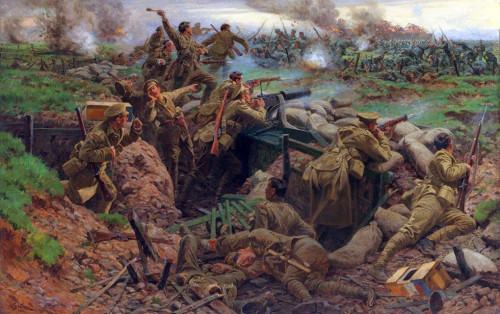
“While initially designed as a ground-attack and close-air-support jet, the Skyhawk proved its versatility by performing various roles throughout its service.”
THE Douglas A-4 Skyhawk may be compact, but it would go on to become one of the most versatile and effective attack jets ever built. Originally designed in the 1950s for the U.S. Navy and U.S. Marine Corps, this nimble jet made a name for itself in combat, training, and even Hollywood. Its innovative design, impressive stats, and enduring legacy make the A-4 Skyhawk plane beloved by aviation enthusiasts and the pilots who flew them. Let’s dive into 10 fascinating facts about this “Scooter” that earned its place in the skies and in history.

1. Tiny but Mighty: Origins of a Lightweight Legend
The Skyhawk was born out of a need for a lightweight, high-performance attack aircraft that could operate from aircraft carriers. Ed Heinemann, the chief designer at Douglas Aircraft, focused on keeping the weight under 10,000 pounds, a radical concept at the time. Heinemann’s dedication to a compact, efficient design led to the A-4’s famous “bantam bomber” form and agile flight characteristics, which earned it the nickname “Heinemann’s Hotrod.”

2. Numbers Game: Size, Speed, and Range Stats
The A-4 Skyhawk measured just 40 feet in wingspan and 40 feet in length, making it one of the smallest jets in the Navy’s arsenal. Despite its size, it packed a 20 mm cannon and could carry an impressive 9,900 pounds of ordnance. With a top speed exceeding 670 miles per hour (Mach 0.94) and a combat range of nearly 1,000 miles, the Skyhawk could fly deep into enemy territory while retaining agility and speed.

3. Versatile and Reliable: More Than Just a Bomber
While initially designed as a ground-attack and close-air-support jet, the Skyhawk proved its versatility by performing various roles throughout its service. From refuelling and reconnaissance to training and electronic warfare, the A-4 adapted to nearly any mission. Its design simplicity and ease of maintenance made it a reliable workhorse, allowing it to serve longer and in more varied roles than its designers initially imagined.

4. Vietnam Warrior: The Skyhawk’s Combat Legacy
The A-4 played a crucial role in the Vietnam War, where it flew countless missions over North and South Vietnam, Laos, and Cambodia. Known for its ability to take off from aircraft carriers and deliver accurate ordnance, the Skyhawk became a vital asset in the conflict. Tragically, some Skyhawks, like those flown by John McCain, were lost to enemy fire, leading to a difficult period of captivity for their pilots. Its contributions in Vietnam cemented the Skyhawk’s place as a combat-proven machine.

5. Skyhawk by the Numbers: Production and Service
Between 1954 and 1979, more than 2,900 A-4 Skyhawks were produced, with the aircraft seeing service in over 10 countries worldwide. While the U.S. retired the Skyhawk in the 1990s, many countries continued to use it, including Argentina, Israel, and New Zealand. Its long production run and international presence underscore the aircraft’s durability and effectiveness.
6. Hotrod in Combat: The Skyhawk vs. Mirage in the Falklands War
The A-4 saw significant action in the 1982 Falklands War, where Argentine Air Force pilots flew Skyhawks in daring attacks against British naval forces. Though they faced advanced British air defenses, Argentine Skyhawks managed to strike several ships, showcasing their pilots’ bravery and the A-4’s surprising combat resilience. Despite heavy losses, these missions demonstrated the Skyhawk’s ability to survive in high-stakes combat environments even decades after its introduction. In the above clip, a British camera crew reports on their close brush with a pair of low-flying Skyhawks.
7. Hollywood’s “Top Gun” Cameo: Skyhawks as MiGs
The Skyhawk famously appeared in the 1986 film Top Gun as a stand-in for Soviet MiGs in training dogfights. Painted black to resemble enemy jets, the A-4s were used by the Navy’s TOPGUN program to train pilots in air combat tactics against small, agile fighters. Its Hollywood appearance gave the A-4 a brief pop culture moment and highlighted its maneuverability even against modern jet fighters.

8. Last of the Line: Israel’s Love Affair with the A-4
The Israeli Air Force was one of the largest operators of the A-4 Skyhawk, using it in various conflicts, including the Six-Day War and the Yom Kippur War. Israel’s pilots praised the Skyhawk for its reliability, ease of maintenance, and impressive payload. Even as more advanced jets were introduced, the A-4 remained in Israel’s inventory, with upgraded versions serving until as late as 2015, making it one of the longest-serving Skyhawk operators in the world.

9. The Skyhawk Legacy: Its Lasting Influence on Aircraft Design
The A-4’s unique combination of simplicity, durability, and multi-role capability set a standard for lightweight attack aircraft. Its influence can be seen in later designs like the LTV A-7 Corsair II and the McDonnell Douglas AV-8B Harrier II. The Skyhawk’s remarkable service record and the loyalty it earned among pilots reflect a legacy of innovation that continues to inform aircraft design to this day.









